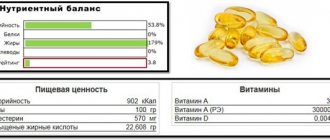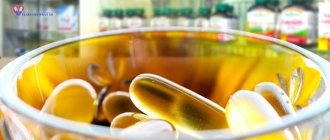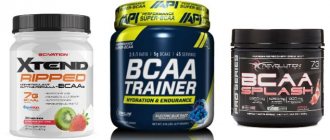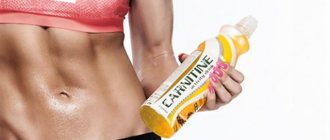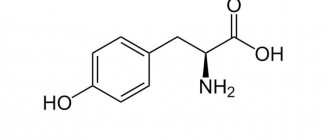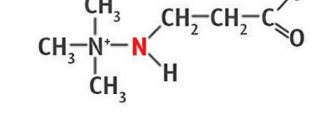Dosage forms
There are only two main types of Glucosamine.
Both of these forms are quite effective. Doctors may prescribe drugs containing glucosamine sulfate or hydrochloride to the patient. There are practically no differences between these two types of medicine. However, sulfate products contain several percent less pure glucosamine than hydrochloride products. In addition, the latter are absorbed faster and better when taken orally. Chitin from farmed marine crustaceans is what is commonly used to produce a substance called glucosamine sulfate. Analogues of the drug made on its basis are usually used by people prone to allergies. The fact is that crustaceans are often grown using hormonal supplements. Therefore, many patients, unfortunately, have an allergic reaction to sulfate medicine. Glucosamine hydrochloride is almost completely free of such disadvantages. It is made from corn husks.
Release forms
Preparations containing chondroitin and glucosamine are used in the treatment and prevention of systemic diseases of the joints and spine. The method of action on tissue depends on the form of release.
Capsules
Many pharmaceutical companies produce biologically active food supplements with a high content of substances and microelements necessary for the healthy functioning of joints.
Capsules contain in their composition in different proportions:
- glucosamine in the form of sulfate or hydrochloride;
- chondroitin sulfate;
- calcium carbonate or pure calcium;
- vitamins involved in maintaining metabolic processes in the joint, for example, E, A, C;
- trace elements: chromium, manganese, sodium, potassium, iron;
- collagen;
- polyunsaturated fatty acids;
- crystalline cellulose, gelatin, maltodextrin and other excipients.
The capsules dissolve in the digestive tract, after which the beneficial substances are absorbed by the intestines. The concentration of nutrients in the blood plasma increases gradually, so regular course intake of supplements is recommended.
Creams
External agents are intended for local impact on a sore joint or area of the back. They help relieve pain and swelling. In addition to the main components, ointments, creams and gels may contain:
- hirudin, which helps dissolve blood clots and eliminate hematomas;
- extracts of medicinal plants, for example, string, horse chestnut, and others;
- bee products: wax, propolis, royal jelly;
- hyaluronic acid;
- panthenol;
- lanolin and other fats, including natural denatured oils.
It should be noted that although studies conducted at the end and beginning of the 20th century confirm the effectiveness of chondroitin in the form of ointments and gels, recent experiments from 2008-14 refute the previous ones and prove the uselessness of the supplement. The fact is that the substance cannot penetrate the skin in sufficient quantities to have the stated effects.
Pills
Unlike capsules, the tablet form allows you to increase the concentration of glucosamine and chondroitin per single dose. They are used as part of complex therapy for arthritis, arthrosis and osteochondrosis, as well as during the period of intensive recovery after injuries and operations.
Ampoules for injections
In cases where quick help for joints is required or oral administration of supplements is impossible, for example, due to allergies or digestive tract dysfunction, chondroprotectors can be used in the form of injections. The drug is administered intramuscularly. Its accumulation in tissues occurs faster than in the case of taking capsules or tablets. However, due to the increased concentration of chondroitin and glucosamine, injections are contraindicated in pregnant, lactating, adolescents and patients with renal failure.
Powder
Crystalline white or yellowish powder, in addition to the main active chondroprotectors, may contain sweeteners and ascorbic acid as a preservative and stabilizer. Before use, it is dissolved in water. This is a systemic means of strengthening and healing joints.
Instructions for use of Glucosamine sulfate
The most convenient way to treat osteochondrosis is with an oral solution of the drug. The powder should be mixed in one glass of drinking water. It is necessary to take Glucosamine sulfate according to the instructions at the time of meals to achieve the best effect. The daily dosage of the drug should be determined by a specialist, taking into account the diagnosis, complaints and symptoms manifested in patients.
As a rule, adult patients suffering from osteochondrosis are prescribed one sachet of Glucosamine sulfate per day. The course of therapy lasts approximately 4-10 weeks, depending on the degree of development of the pathology. If osteochondrosis does not completely recede, the doctor may extend the treatment. However, a second course of therapy can be started no earlier than after 2 months.
In addition, you can use Glucosamine sulfate in tablet form. They should also be taken with meals with a glass of water. Typically, adult patients are prescribed one tablet of the drug per day. Therapy can last from three months to six months. The final dosage is determined by the attending physician after a full examination.
It is strictly not recommended to use Glucosamine Sulfate, as well as other chondroprotectors, without a doctor’s prescription. After all, an ill-chosen dosage can harm the body rather than cure it.
What is the remedy
Actually, the substance glucosamine itself is always present in small quantities in the human body. It is produced naturally and helps to increase the extensibility of cartilage tissue. In addition, glucosamine also has an immunomodulatory effect on the human body. That is, it increases resistance to various types of infections.
The drug Glucosamine itself has approximately the same pharmacological effect. In most cases, this remedy is taken by patients in the form of a powder solution. One sachet from the purchased package of Glucosamine medication is simply poured into water (200 ml) and stirred thoroughly. In some cases, this drug may also be used in tablet form. Doctors sometimes use a ready-made solution of Glucosamine for injection. Analogs of this drug that exist on the market are most often available in the form of capsules or tablets.
Once in the human body, a medicine containing glucosamine reduces pain, inhibits degenerative processes in joints, and relieves inflammation. This drug, like almost any other medicine, can, of course, have side effects. However, this happens extremely rarely. Glucosamine is not too expensive. The price for it is only about 350 rubles. for 30 tablets.
What is glucosamine used for?
Glucosamine sulfate is a substance that is not very abundant in food. In the body, it is produced in cartilage tissue, increasing the productivity of sugar chains that act as cartilage restorers.
Glucosamine was first used in veterinary practice. It was used to treat joint diseases in animals. After scientists were convinced of its effectiveness, the substance began to be used in medicine for people. In the 80s in Europe, glucosamine was actively used to treat diseases such as osteoarthritis and osteoarthritis. Its beneficial effects on cartilage and connective tissue have been noted. Therefore, the product has gained popularity.
Glucosamine is an amino monosaccharide present in the human body and produced by chondrocytes, cartilage cells, directly in the cartilage to ensure the functioning of the joint. Glucosamine's main and main job is to create long chains called glucosaminoglucans (GAGs), which joints and cartilage need for repair. GAGs, formerly known as mucopolysaccharides, are long chains of modified disaccharides, the main component of proteoglycans (PGs). They, along with chondrocytes and collagen, make up cartilage. Chondrocytes use consumed Glucosamine to produce more cartilage components; there are four main types of GAGs - chondroitin sulfate, hyaluronic acid, keratan sulfate, and, to a lesser extent, dermatan sulfate.
Chondrocytes are responsible for the synthesis, maintenance and restoration of cartilage tissue. Having Glucosamine on hand means your body will have a better chance of reducing or stopping pain caused by lack of joint fluid and poor shock absorption.
Chondrocytes have two ways to create GAGs. In the first, glucose molecules are phosphorized (phosphorus compounds are added) and then undergo an epiremization reaction (basically changing the configuration of the constituent substances). This modified sugar then receives an amino group derived from glucosamine. The enzyme synthetase (from glucosamine) forms the glucosamine-6-phosphate molecule, which then undergoes additional transformations in the synthesis of GAG. This is the “natural” way. The second way is basically taking supplements. What I mean by this is that chondrocytes use semi-finished glucosamine from dietary supplements. When glucosamine enters chondrocytes, a phosphorylation reaction occurs that forms glucosamine-6-phosphate, and with its help natural synthesis reactions continue.
Indications
Remember that the body independently produces the substances it needs. However, due to illness, age, overexertion, injury and other things, synthesis may be disrupted. In these cases, it is best to watch your diet. It is necessary to eat fish (especially salmon), mussels, shrimp, aspic, jellied meat, fruit jelly, and drink rich broth. You can get Glucosamine hydrochloride from animal meat, fish cartilage, poultry and hard cheese. If it is impossible to compensate for the deficiency of substances naturally, then dietary supplements will come to the rescue. They can be taken both for prophylactic purposes and as a supporting agent during therapy.
Indications for use:
- arthrosis of the first degree (not depending on the location);
- periarthritis;
- for athletes;
- people over 50 years old;
- during rehabilitation in the postoperative period;
- increased physical activity;
- excess body weight.
How do combined chondroprotectors work?
When used simultaneously, glucosamine and chondroitin mutually enhance and complement each other's effects. They influence various metabolic processes, which makes their combined use particularly appropriate.
Exogenous HA is actively involved in the synthesis of hyaluronic acid and glycosaminoglycans, prevents the formation of free radicals and enzymes that destroy cartilage tissue, and protects articular cartilage from the destructive effects of non-steroidal anti-inflammatory drugs. Glucosamine has a moderate analgesic and anti-inflammatory effect.
CS stimulates the synthesis of proteoglycans, collagen, hyaluronic acid, suppresses the activity of hyaluronidase, peptidase and elastase - enzymes that destroy cartilage tissue. Chondroitin sulfate maintains the viscosity of synovial fluid, retains moisture in the thickness of cartilage, and has an analgesic, anti-inflammatory, and regenerating effect.
Effects of using chondroprotectors:
- stimulation of chondrocytes - cells that synthesize glycosaminoglycans, collagen, proteinoglycans, hyaluronic acid and other substances necessary for the normal functioning of joints;
- inhibition of the activity of lysosomal enzymes that destroy articular cartilage and accelerate the development of osteoarthritis;
- reducing the intensity of joint pain;
- reduction in the activity of inflammatory processes in the synovium and other joint tissues;
- increasing the resistance of chondrocytes to the negative effects of proinflammatory cytokines, corticosteroids, NSAIDs.
Video from Boris Tsatsouline about the side effects of chondroprotectors:
Results of using drugs with glucosamine
Regular use of glucosmin allows you to restore the elasticity of joints, expand the range of physical activity and improve the quality of life in the presence of diseases of the musculoskeletal system.
Glucosamine takes part in many internal processes of the body:
- stimulates the production of hyaluronic acid in synovial fluid, the synthesis of proteoglycans;
- restores metabolic processes in cells;
- slows down aging and the appearance of age-related changes;
- reduces the severity of the inflammatory process;
- increases the permeability of the joint capsule;
- ensures joint mobility;
- participates in the course of enzymatic reactions;
- reduces pain;
- inhibits the destruction and occurrence of degenerative-destructive changes in cartilage.
The high effectiveness of glucosamine is confirmed by reviews of drugs containing it. For many people, this remedy allowed them to forget about joint stiffness, pain and limitation of physical activity. Before using glucosamine, read the instructions. Follow the recommended dosage of the drug and do not interrupt the course of treatment without special reasons.
Benefits of glucosamine
The substance is involved in the construction of the basic substance of the human skeleton. The actions of Glucosamine Chondroitin include:
- inhibits enzymes that disrupt the structure of cartilage;
- accelerates the production of glycosaminoglycan substances;
- improves the metabolism of hyaline tissue;
- prevents compression of connective tissue;
- enhances the secretion of synovial fluid;
- slows down the destruction of bone tissue;
- inhibits the development of osteoporosis;
- reduces the process of calcium loss in bones;
- has the ability to restore damaged bone tissue;
- reduces pain when walking;
- eliminates severe inflammation in joints;
- promotes the synthesis of hyaluronic acid;
- strengthens connective tissue structures.
Benefits of glucosamine. Photo: yandex.ru
Glucosamine Chondroitin complex analogs and description
This medicine is also often prescribed by doctors to patients with joint problems. It is, in fact, another inexpensive analogue of Glucosamine. In this case, both active substances included in the drug harmoniously complement each other, increasing the effectiveness of treatment. Glucosamine is involved in the synthesis of acids necessary for the formation of cartilage tissue, and also contributes to the normal deposition of calcium in the bones. Chondroitin, which is part of the complex, plays the role of a kind of lubricant in the joints.
Both of these components also, by enhancing each other’s action, slow down the destruction of cartilage. Research conducted by experts has shown that together these substances have a much faster and more pronounced healing effect on the human body. The price for the complex drug “Glucosamine + Chondroitin” is also only about 350 rubles. Which, of course, is very inexpensive.
In pharmacies, such a medicine is often sold under the name “Glucosamine Maximum” (its analogues, like the regular, non-strengthened form of the medicine, are numerous and will be discussed below). In addition to the two main active substances, such a medicine most often contains cellulose, calcium carbonate, silicon dioxide, stearic acid, wax and glycerin. There is also a simple product on sale called Glucosamine and Chondroitin, produced by both domestic and foreign companies.
A serious approach to solving problems with joint pain
But the best vitamin complex in the world from Universal Nutrition, called Animal Flex, can help eliminate pain in ligaments and joints. It contains a lot of vitamins, minerals and special components for restoring joint structure, including amino acids, gelatin, protein, glucosamine, chondroitin. Reviews for this product among professional athletes are only positive.
However, many beginners who want to give their preference to the market leader will be upset by the size of the portion that must be taken daily at one time. Many small and large capsules of different colors can cause negativity. The price (2500-3000 rubles) will also upset the buyer.
Price and analogues
According to reviews, “Glucosamine sulfate” is not at all difficult to find, since it is sold in almost every pharmacy. The average cost of the drug ranges from 300-400 rubles. For example, 30 tablets can be purchased for approximately 360 rubles. The powder is sold in 20 sachets for 400 rubles. Capsules can be a more profitable purchase: 60 pieces cost only 350 rubles.
In addition, doctors can prescribe a drug to the patient that has an identical composition and a similar spectrum of action. Analogues of "Glucosamine sulfate":
- "Aponil."
- "Vipratox."
- "Diamax".
- "Pharmaskin".
- "Alite."
- "Heron osteoisi."
- "Ameolin."
- "Elbona".
- "Arthrox."
- "Dona".
- "Negan."
- "Artiflex".
- "Aminoarthrin."
- "Mesulide".
- "Unium".
- "Arotrodar".
- "Nise."
- "Glucosamine hydrochloride."
- "Artron complex".
Analogs
Analogue drugs based on the active substance:
- ARTRA;
- Chondroxide;
- Chondrolone;
- Chondroguard;
- Larkspur;
- Kartilag Virtrum;
Chondroprotectors with chondroitin and glucosamine:
- Sofia – cream;
- Chondroitin-Acos – capsules;
- Solgar - tablets;
- Joint Forte – body cream;
- Arthrocin – cream;
- Doppelhertz – capsules;
- Shark oil cream.
External products with chondroitin/glucosamine, vitamins, minerals, and other additives:
- Smart cream (mummy);
- Sophia cream (bee venom);
- Natural Bounty tablets (calcium, vitamin D);
- Teraflex.
The use of analogues requires consultation with a specialist to avoid side effects and to achieve a better therapeutic result.
Indications for use
Experts prescribe this drug to patients diagnosed with “osteochondrosis” or “osteoarthrosis of the spine.” If during the period of illness a person experiences severe pain in the back and normal joint mobility disappears, then the use of Glucosamine sulfate with chondroitin is considered a mandatory stage of treatment. It must be taken in combination with other medications and physiotherapeutic procedures. Only in this case will the treatment of detected pathologies bring the desired result.
Indications for the use of the drug are usually the following diseases:
- glenohumeral periarthritis;
- spondylosis;
- primary and secondary osteoarthritis;
- chondromalacia patella;
- osteochondrosis.
But any of these pathologies, definitely, cannot be treated with Glucosamine Sulfate alone. In addition to this drug, other medications and procedures must be used.
Local chondroprotectors: ointments, gels and creams
The most famous remedy for topical use is Chondroxide, which has 3 release forms - ointment, gel and cream. The gel has a stronger effect compared to ointment and is recommended for use during periods of exacerbation. It is quickly absorbed and does not require rubbing, and therefore does not leave greasy marks on clothes.
Chondroxide gel is convenient to use for active people who are often in a hurry and do not have time for long rubbing and waiting for absorption. The product can be used for a long period, up to three months. It is applied 2-3 times a day to the affected area. This is a single drug, 1 g. gel contains 50 mg of chondroitin.
It is better to use Chondroxide ointment during the period of remission, when you can already do massage. It is recommended to apply it with massaging movements to speed up the penetration of medicinal substances through the skin. The duration of treatment is the same as for the gel.
Chondroxide molecules are quite large, and they cannot penetrate the skin on their own. To solve this problem, Chondroxide ointment includes Dimexide, which helps chondroxide cross the path through cell membranes. In addition, Dimexide has an anti-inflammatory and analgesic effect.
Chondroxide Forte cream contains chondroitin and Meloxicam, a non-steroidal anti-inflammatory component of the latest generation (NSAID). It is used if it is necessary to reduce inflammation and eliminate pain, swelling and redness. The drug has contraindications that all NSAIDs have, and is not recommended for diseases of the gastrointestinal tract.
Chondroxide Maximum cream differs from previous drugs in that it is a transdermal agent. This means that after application it creates a film on the skin and the medicinal substances are released gradually and in doses.
Clinical trials of chondroitin-based ointment have proven that the effect of using the product lasts for several months - on average, this period is six months
The active substance of the cream - glucosamine in combination with Dimexide - is enclosed in a lipid shell that forms a micelle (nanoparticle). After application, the micelle penetrates the skin and delivers the medicine directly to the joint. In this case, the concentration of the active substance is comparable to the injection one.
Chondroxide Maximum cream is applied to the sore spot 2-3 times a day for three weeks or a month. If necessary, the course can be repeated.
Drug interactions
It is also very important to know which medications cannot be taken simultaneously with a chondroprotector. After all, this drug can reduce or enhance the effectiveness of certain medications
- Glucosamine sulfate increases the effectiveness of tetracyclines used to stabilize intestinal function.
- The drug impairs the properties of the antibiotics penicillin and chloramphenicol.
- The medication reduces the negative effect of corticosteroids on damaged cartilage tissue.
- The chondroprotector is compatible with any non-steroidal anti-inflammatory drugs and glucocorticosteroids.
If a patient plans to take Glucosamine and other drugs in parallel, he should definitely consult a specialist. Only a doctor can change the prescribed dose of a chondroprotector so that it does not harm the body.
Pharmacological property
Chondroprotectors are used to improve the condition of cartilage and joints. According to the mechanism of action, they belong to the correctors of the metabolism of cartilage and bone tissue. In addition to them, this pharmacological group includes chondraitin sulfate and other glycosaminoglycans - preparations containing hyaluronic acid
Glycosaminoglycans are an important component of the extracellular connective matrix
Most of all, our body contains glycosaminoglycan. It is also the polysaccharide Chondroitin sulfate. The therapeutic effect of the complex is explained by the presence in its composition of the required amount of Chondroitin sulfate and Glucosamine. The latter is a monosaccharide necessary for the connection of glycosaminoglycans. Each component of the complex is effective, but together they enhance the effect. Glucosamine-Chondroitin has a clear chondrostimulating, regenerative and anti-inflammatory effect. In the human body it is necessary for:
- elasticity and strength of fabrics;
- strengthening ligaments and tendons;
- shock-absorbing layer that reduces the load on muscles and joints;
- suppression of the action of enzymes that destroy cartilage tissue;
- obstacles to the leaching of calcium, stabilization of phosphorus metabolism;
- retention of water in cartilage tissue, thereby promoting the recovery process;
- formation of synovial fluid - intra-articular lubrication;
- increasing the amount of type 2 collagen, as well as hyaluronic acid;
- relieving stiffness by slowing down the inflammatory process and reducing pain.
Aids for joints and ligaments
Collagen is available commercially in tablet or capsule form. This protein accounts for about 6% of the weight of the human body, it is the main element that forms the strength of tissues, connecting and holding cells together. Collagen is not cheap, but it can be replaced with regular gelatin, which is nothing more than hydrolyzed collagen.
Calcium and vitamins are another key to successful prevention. Vitamins B, C, E, magnesium, selenium, phosphorus are needed. In combination with chondroprotectors, they are able to launch recovery processes and improve metabolism. Minerals and vitamins beneficial to the body will improve overall well-being. We must not forget about amino acids.
Fatty acids, in particular linoleic and gamma-linoleic acid, are important for strengthening ligaments, muscles, and joints. They are present in large quantities in primrose and borage.
What other analogues exist?
Of course, Chondroitin is not the only drug that has the same effect on joints as Glucosamine. There are many drugs on the market with the same pharmacological effect. For example, instead of the drug "Glucosamine" in certain cases you can use:
- "Chondromax Herbal". This product is a natural combination complex that slows down the process of cartilage destruction and improves joint mobility. This drug costs about 370 rubles. per pack of 30 tablets.
- "Diclovit." This drug is prescribed for degenerative joint diseases, pain after exercise, and migraines. It costs about 200 rubles. (30 tablets).
- "Arthro-Gran". Used for swelling of joints and stiffness of movement. It costs about 100 rubles (10 g pencil case).
- "Collagen-Ultra". This medicine is prescribed to improve joint mobility, for fractures, etc. This analogue of the drug "Glucosamine" is quite expensive - about 800 rubles. for 30 pcs.
There are also such well-known analogues of Glucosamine as “Teraflex” and “Arthra”.
What is chondroitin?
Chondroitin is one of the types of proteoglycans described above that provide mechanical strength to cartilage. It ensures fluid retention in cartilage, which provides its physical properties: the ability to dampen loads.
Taking chondroitin is believed to be beneficial for joint health due to the following mechanisms of action:
- maintaining the required viscosity of synovial fluid in the joint cavities by stimulating the function of the synovial cells that produce it;
- stimulation of the function of chondrocytes - minifactories for the production of the constituent components of joint tissues - which produce collagen and proteoglycans to create new cartilage tissue;
- blocking the action of certain enzymes that have been found in the joint fluid of people with joint diseases (rheumatoid arthritis) and may be responsible for the destruction of joint tissue;
- promoting an increase in the number of chondrocytes.
The described properties can potentially help reduce joint pain, improve mobility, and also reduce the rate of cartilage degradation.
As a component of chondroprotector preparations, chondroitin is extracted from the cartilage of animals: cows, pigs, birds, fish (sharks) or is synthesized chemically in the laboratory.
Chondroitin, like glucosamine, is soluble in water.
Scientific studies, as in the case of glucosamine, do not clearly confirm the effectiveness of chondoroitin for the treatment and prevention of joint diseases.
Chondroitin is a structural component of cartilage that provides its mechanical strength. Its benefits for joint health have not been unequivocally confirmed by scientists.
Preparations containing chondroitin and glucosamine
Combined drugs belong to the third generation of chondroprotectors. These drugs are effective in the treatment of osteoarthritis, in the fight against unpleasant symptoms and the progressive destruction of cartilage tissue. The first generation of chondroprotectors includes preparations on a natural basis, the second generation includes mono-drugs.
Table 1. Preparations containing glucosamine and chondroitin
| Name | Manufacturer | Release form | Price, rub |
| Teraflex | Bayer, Germany | Capsules | 1000-4000 |
| Teraflex Advance | Sagmel, USA | Capsules | 500-3000 |
| Artra | Unifarm, USA | Pills | 700-3000 |
| Glucosamine-Chondroitin Plus | Solgar, USA | Pills | 2200-4000 |
| Inoltra | Irvine, USA | Capsules | 1600-4500 |
| Glucosamine and chondroitin complex | Solgar, USA | Pills | 2300-3800 |
| Khondronova | Panacea, India | Capsules | 400-720 |
| Glucosamine-chondroitin complex | Pharmakor, Russia | Capsules | 240-680 |
| Doppelgerz active Glucosamine + Chondroitin | Queisser, Germany | Capsules | 350-700 |
Does all this help?
The main disadvantage of the supplement is its high cost. And therefore it is important for the buyer to be sure that the drug works. Is this so?
Scientists are still arguing among themselves about how to use glucosamine and chondroitin to obtain maximum effect. And do these drugs work enough to warrant spending so much money on them?
Fat burner for women: main methods of administration and tips on how to choose sports nutrition for weight loss (125 photos and videos)Tryptophan in foods - a list of foods with the highest amino acid content (125 photos)
The best fat burners - the best sports drugs and a description of their action. 70 photos and instructions for use
Most studies confirm that the complex is an excellent prevention of joint disease in patients of any age. This is especially true for osteoarthritis.
Patients experiencing joint and ligament pain can use:
- fish fat;
- olive oil;
- sesame;
- oats and wheat;
- egg white;
- peanut.
These foods contain methionine, an amino acid that the body cannot synthesize on its own. It leads to improved joint function and relieves pain.
Glucosamine and chondroitin
I’ll say right away that I have no goal to throw mud at this or that drug. I just want to collect the most objective series of meanings, with the help of scientific research, practice and my reasoning.
First, I’ll tell you about these supplements separately (although they are usually used in combination).
Glucosamine sulfate
Glucosamine
– is one of the most common monosaccharides (the building blocks from which more complex disaccharides, such as glucose, maltose, lactose, OLIGOSACCHARIDES and POLYSACCHARIDES, such as starch, are built).
This aminosaccharide (monosaccharide) is part of polysaccharides such as chitosan (a chitin derivative that absorbs toxic substances and reduces the absorption of fats from the intestines).
There are two forms of glucosamine:
- Hydrochloride.
- Sulfate.
We will only talk about SULFATE, because there is practically NO difference between them, and in terms of effectiveness too, because... SULFATE IS CONVERTED IN THE GASTROINTESTINAL TRACT INTO HYDROCHLORIDE.
Whatever you take from these two forms, you will receive the same form in the gastrointestinal tract.
Functions of glucosamine in the body
Glucosamine strengthens and improves:
- Cartilage.
- Tendons and ligaments.
- Synovial fluid (the natural lubrication of our joints).
- Muscle tissue.
- Skin.
- Bone tissue.
- Nails and hair.
- Heart muscle (valves).
- Blood vessels.
Glucosamine is produced naturally in the human body. This is one of the most important building elements of the connective tissues of the osseous-ligamentous apparatus.
Glucosamine helps increase the tensile strength of cartilage (the engineer in me woke up))
I won’t talk separately about its effectiveness now. I’ll tell you a little lower when we talk about chondroitin and glucosamine together.
There are many conflicting studies regarding the positive effects of glucosamine in the prevention and treatment of joints. Some studies claim that glucosamine is absolutely useless, others that it actually helps.
I will draw my conclusions below, but for now let’s talk about chondroitin.
Chondroitin
Chondroitin sulfates
- components of the cartilage of our body, produced by the cartilage tissue of the joints, which are part of the synovial fluid.
The constituent substances of chondroitin are GLYCOSAMINOGLYCANS (part of the intercellular substance of connective tissue, and also found in bones, synovial fluid, and the cornea of the eye).
With a lack of glucosamine in the body, a LACK of chondroitin sulfate is formed in the synovial lubricating fluid, which can cause crunching in the joints.
Functions of chondroitin in the body
- Gives elasticity to cartilage (+ shock absorption), because retains water in tissues (loss of chondroitin in cartilage leads to osteoarthritis).
- Strengthens the strength of ligaments and tendons.
- Suppresses the activity of elastase and peptidase (enzymes that destroy connective tissue).
- Reducing joint pain associated with “cartilage wear.”
- Regeneration of cartilage tissue (weakly expressed).
- Improving the quality of synovial fluid.
- Improving skin properties.
Glucosamine, chondroitin, collagen as substances for strengthening joints
Those who engage in regular training believe that they have a good understanding of various types of sports supplements. Everyone knows, for example, that whey protein is more effective than others; BCAAs, creatine, and glutamine are required. We are even familiar with pre-workout products. But many have never heard of such products as glucosamine, chondroitin, collagen - so, they say, some kind of medicine, why do I need them? Let's get a look.
After many years of working with heavy barbells and huge dumbbells, when you are fighting a hard war for every gram of muscle tissue, the consequences of this will sooner or later begin to appear. Well, okay, the palms become rough, the psyche gets tired, but the main engine begins to sit down, and also the joints fail, gradually wearing out, and the ligaments weaken. And restoring a damaged joint often turns out to be impossible; the price to pay for excessive stress can be cruel.
Having damaged your shoulder joint, it will not be long before you begin to pump up your mighty deltoids and luxurious pecs, and if your knee gives out, you will have to forget about training your legs. But there is still a chance for salvation.
For good progress in bodybuilding or fitness, you need a competent training program that takes into account the athlete’s level of training and goal. Our website contains a large number of training programs compiled by professionals. Go to the training section
Let's understand the anatomy
Since every person has a bone skeleton, he can already consider himself a bit of a terminator. True, not so durable. Human bones are connected to each other by joints. The joints of two or more bones can have different shapes - elliptical and spherical, cylindrical and block-shaped, saddle-shaped and flat. For example, the hip joint is spherical, and the knee joint is trochlear. Mobility in the joints can also be different - they are mobile and immobile, and there are also weakly mobile ones. Bone cartilage serves to ensure intra-articular mobility.
Cartilage - what is it?
Cartilage mostly consists of cartilaginous tissue, which includes cellular and non-cellular elements. At the same time, there are more non-cellular ones; they make up elastic and fibrous tissue, formed mainly from collagen protein. The cellular elements of cartilage and its fibrous structures are surrounded by connective tissue, a metabolic integrative buffer environment with a gel-like consistency. It includes proteoglycans and the water they retain. Metabolic processes occur through it, and it also provides the cartilage with a shock-absorbing function.
Cartilage tissue has another important component - the intercellular and interfibrous interstitial space, which is a system of special channels formed by fibrous structures. These channels are filled with the main substance, which represents the second link of microcirculation. Under the influence of osmotic and capillary forces, mechanical pressure, interstitial fluid moves. Channels are round cavities, slits, and tubes.
Cartilage tissue contains cellular elements that constantly restore it and renew the main cartilage cells - chondrocytes, chondroblasts and cambial cartilage cells. There are three types of cartilage - fibrous, elastic and hyaline. It is the latter that are most interesting to us, since they are based in the joints of the musculoskeletal system, which is what bodybuilders train. The name of this group comes from the external resemblance of such cartilage to hyaline, a glassy dense protein substance.
We are mainly interested in cartilage tissue, as well as the fluid surrounding it.
What is the problem
All textbooks for athletes and specialized magazines convince us: before any training with a load, a thorough warm-up is necessary, and all the main approaches must be performed “cleanly”. This will help eliminate sprains, injuries and other troubles.
But the fact is that any strength training with increased load is itself a microtrauma. Like a huge battering ram, the load hammers into your joints, and their protection gradually gives way - cracks appear in the armor. Over time, the articular cartilage wears out, and the amount of interarticular fluid is insufficient.
Such changes also occur in people who have never trained with hardware. These are age-related degenerative changes in joint tissue, which can be triggered, for example, by low human mobility. Immobility slows down the blood supply, and as a result, metabolism in the joint tissues is disrupted with very unpleasant consequences. This is how arthritis appears, a very unpleasant disease. With arthritis, growths appear on the surface of the joints, severe pain appears, which continues to torment the person even at rest.
He finds that he is unable to move his arms and legs in full range, and doing some exercises becomes painful and uncomfortable. It turns out that by lifting weights, bodybuilders accelerate wear and tear on their joints. A thirty-year-old person can have the same joints as a 70-year-old. And it is true.
Attempts to treat joints
The disease does not occur instantly; its development is accompanied by unpleasant symptoms, and many athletes begin to fight them on their own, using a variety of painkillers. Regular aspirin is used, diclofenac (Voltaren), ibuprofen and other drugs are often used.
But diclofenac does not cure joints! It only allows you to temporarily relieve pain and reduce the activity of inflammatory processes. But that's all - taking painkillers does a disservice to the athlete. The appearance of pain is a signal from the body that there are problems in it, and it is necessary to reduce the load or completely eliminate it. Ignoring pain means making things worse. However, many people only learn from their own mistakes.
Constant moderate physical activity will help maintain healthy joints at any age. The best option is cardio training. Running, swimming, functional training are all types of cardio training. Read a great article about cardio on our website. Go to article
If not painkillers, then what?
There are three substances that the body produces that are necessary for the production of connective tissue. These are glucosamine sulfate, hydrolyzed collagen and chondroitin sulfate.
Glucosamine is an essential part of cell membranes and surfaces, protein structures, along with the molecules that hold cells together. Damaged cells require glucosamine to a much greater extent than normal cells.
Glucosamine is essential in the formation of tendons and cartilage, synovial fluid and ligaments, bones and nails, skin and heart valves. It is involved in the production of blood cells and is the basis of mucus secreted by the digestive, respiratory and excretory systems. This substance also promotes the synthesis of thyroid hormones and gonadotropins, proteins that affect immunity (immunoglobulin and interferon), as well as transport molecules and a number of other useful substances.
Oddly enough, glucosamine has not been widely used in medicine, except perhaps in sports medicine, where it has been used to treat knee joints. It is advisable to take 1500 mg of glucosamine every day, dividing this dose into three doses. Since glucosamine has a long half-life, it is advisable to take it in the morning and before bed. To speed up the recovery of bone tissue, you can increase the level of intake to 1000 mg in the morning and evening, but do not expect an immediate reaction - joints recover very slowly. It may take several months to feel any positive changes. Therefore, if you do not get instant results, you should not panic and increase the dosage.
If you take painkillers, glucosamine will reduce their dosage, which means eliminating possible side effects.
Chondroitin sulfate is a drug that is unfairly underestimated today. It is obtained from shark cartilage and the trachea of pigs and bulls; just like glucosamine, it takes part in the synthesis of cartilage, directly stimulating them. Chondroitin is able to block enzymes that destroy joints. If you take chondroitin constantly and regularly, joint pain will decrease and their mobility will increase.
The dosage of chondroitin is from 1000 to 1500 mg per day, either immediately or in two doses. The half-life of this substance occurs in 12 hours.
Collagen. This protein is the most important in the human body. It may seem incredible, but it makes up six percent of the total human body weight. It is thanks to collagen that a person does not turn into a shapeless carcass: it serves as the glue that glues us together. In connective tissues, including cartilage, collagen is an anhydrous component. Cartilage predominantly contains type II collagen, other types are contained in smaller quantities. Other connective tissues contain more collagen types I and III. If you want to understand what collagen is, pay attention to such a dish as jelly.
Collagen is essentially a protein, but it is not very suitable for building muscles - it does not contain enough amino acids. Helping damaged joints is a completely different matter. For this purpose, collagen hydrolyzate is used, previously split with the help of enzymes. But the effect of this substance is not as strong and fast as that of chondroitin and glucosamine.
You may ask, do you need to take collagen if you are already taking chondroitin and glucosamine? But this substance provides slightly different support for damaged joints than the other two supplements. Thus, it allows you to restrain the effects of a number of destructive enzymes.
It is important to adhere to the dosage – 10 grams daily. Collagen supplements can be purchased in powder form and diluted with water. However, eating jellied meat is no less useful.
Complex remedy
It is best to take chondroitin, collagen and glucosamine together. They support each other and begin to work more quickly and efficiently. There are also other substances that can heal and strengthen your joints. These are methylsulfanomethane, curcumin, bromelain, essential fatty acids, shark cartilage and others. Even vitamin C will be useful. But the main rescue set is the “big three”.
The human body itself produces these substances; they are contained in food products in significant quantities, so they have no side effects and are well tolerated by users, even if they are taken for a long time - for a year or more. Yes, that’s exactly how much you need to take these joint-saving remedies. This is especially true for those who are over 40 years old, and at the same time they have not given up working with iron. Consistently taking these three supplements, or at least one of them, is a must: there is a very real safety issue. These supplements will not bother you financially, the prices are low.
And you shouldn’t wait until joint pain appears - by taking supplements for prevention, you can prevent their occurrence.
Side effects
It is a safe dietary supplement, has high tolerability, and does not have a negative effect if the dosage is observed.
At higher doses, as well as in case of increased duration of administration, the following are possible:
- allergies (rash);
- flatulence, constipation, diarrhea, other stomach disorders;
- headache;
- sleep problems;
- swelling;
- pain in connective tissues;
- weight loss;
- increase in heart rate.
If you simultaneously take tetracyclines, the solubility of the dietary supplement increases.
When taken simultaneously with penicillin, the bactericidal properties of the additive are weakened.
Side effects
Despite the similarity and usefulness of the main components to the tissues of joints and cartilage, an increase in their concentration in the body can cause a number of serious side effects from:
- Gastrointestinal tract: flatulence, constipation, diarrhea, intestinal colic, indigestion, bleeding.
- Heart and blood vessels: tachycardia.
- Nervous system: headaches, dizziness, pain syndromes at the ends of peripheral nerves.
- Metabolism: increased risk of developing type 2 diabetes, fluid retention.
- Skin and immune system: allergic reactions, rash, angioedema, less commonly anaphylaxis.
If undesirable manifestations occur, it is necessary to provide symptomatic assistance and stop taking the dietary supplement.
In case of overdose, the patient has pronounced side effects. It is necessary to rinse the stomach and seek medical help.
Supplements with chondroitin and glucosamine should not be taken during any trimester of pregnancy or while breastfeeding, since the substances negatively affect fetal development and accumulate in milk.
Chondroprotectors are not prescribed to children under 12 years of age. The use of supplements by adolescents entails high risks and is only possible in cases where the development of a serious disease is more likely than possible harm and side effects.
Description
The main active ingredient of this remedy is an aminosaccharide, which gradually accumulates in the cells of the musculoskeletal system. It is then used as a building material to form articular ligaments, heart valves, nail plates and cartilage.
Glucosamine sulfate is a substance that also affects metabolic processes in cartilage tissue. It replenishes the natural deficiency of the substance, promotes the activation of the production of proteoglycans, synovial fluid and hyaluronic acid.
In addition, glucosamine sulfate increases the permeability of joint capsules and normalizes enzymatic phenomena in the cells of synovial membranes and articular cartilage. In addition, this element promotes the fixation of sulfur during the production of chondroitinsulfuric acid and simplifies the natural deposition of calcium in bone tissue. In addition, glucosamine sulfate prevents the progression of degenerative processes in the joints, normalizes their functions and eliminates pain.
The bioavailability of the main active ingredient of the drug with proper oral administration is approximately 25% due to the first pass effect directly through the liver. The highest concentration of the component is detected in this organ, as well as in the kidneys and articular cartilage. The processed ingredient is excreted unchanged mainly in urine and only partially in feces.
Why do I need glucosamine?
Glucosamine consumption is indicated to stimulate the production of GAG and PG. When glucosamine is available to chondrocytes, they are able to produce connective tissue faster because they can skip three chemical reactions and only perform the phosphorylation reaction to produce glucosamine 6-phosphate. Also, when glucosamine from supplements is received by the body, fibrous joint tissues begin to heal, and the diffusion of glucose and amino acids across the walls of joint capsules and synovial membranes improves. This provides chondrocytes with the raw materials (sugars and amino acids) necessary to stimulate the synthesis of GAG and PG. Eventually, the lack of suitable glucosamine can cause GAG synthesis to stop. In turn, this may cause proteoglycan synthesis to also stop. Around this time, you may notice your joints starting to feel a little sore after a hard workout, or your knees feeling stiff after a few hours of cardio. Over a period of time, this wear and tear can lead to the development of osteoarthritis.
With osteoarthritis, cartilage wears away and protruding bones rub against each other. This can become very painful and can affect the joints of bones and vertebrae throughout the spine, which can pose a great danger to the nerve endings.
Taking Glucosamine is recommended for everyone suffering from osteoarthritis, because... it allows you to improve mobility in the joint, alleviate pain, it is even comparable to ibuprofen in terms of reducing pain.
In terms of supplements, there are four available sources of Glucosamine: Glucosamine hydrochloride, Glucosamine hydroiodide, N-acetyl Glucosamine and Glucosamine sulfate. However, of these four compounds, only sulfate and hydrochloride (HCL) are recommended for use. These two glucosamines are identical in their effect, but the hydrochloride is more beneficial because contains more glucosamine. In fact, the percentage of pure glucosamine in these two compounds is 83% in the hydrochloride and 65% in the sulfate. The reason for this difference is that during the manufacturing process, sodium and potassium increase the glucosamine content (resulting in 83% of the hydrochloride), and sulfur (hence the “sulfate”) causes a loss of glucosamine in each tablet or capsule. But after ingestion, glucosamine sulfate breaks down into glucosamine and sulfur ions, so, as mentioned above, the effect of both compounds will be the same and it does not matter whether you take the hydrochloride or the sulfate. N-Acetyl Glucosamine (NAG) contains 81% pure glucosamine. This leads to the false belief that NAG is superior to sulfate, but NAG is absorbed completely differently compared to other forms of glucosamine. Instead of being absorbed relatively intact, gut bacteria quickly digest it, and gastrointestinal tissues absorb the NAG before sending it to cartilage. Existing studies show the beneficial effects of NAG, but overall it is best to avoid this form of glucosamine based on the investment-benefit ratio. Another interesting feature of glucosamine is that, unlike other amino sugars, it can be digested and then retain its basic properties and does not break down into components like other substances. For example, insulin, a peptide hormone, when taken orally, is broken down into its constituent amino acids and used as a source of protein and energy. Therefore, insulin should only be taken intravenously. Glucosamine, as already mentioned, retains its properties when taken orally, although it is quite obvious that taking it intravenously would be much better, but this is impractical and unsafe, especially for people who have an aversion to needles.
Glucosamine is made from chitin, the main component of mollusk shells. Crabs, shellfish, and lobsters are very popular among glucosamine manufacturers. Calcium carbonate and proteins are extracted from chitin and, after hydrolysis, are converted into glucosamine hydrochloride. If manufacturers want to make glucosamine sulfate, they simply add sulfur compounds. More often it is sulfur compounds that are added because it saves money on production costs, because sulfur is mainly a "filler". By the way, more than 90 percent of the glucosamine imported into the United States comes from China because it is cheaper to produce and has less quality control. A wise man once said, “Dosage makes poison,” or something similar about this effect. If you're confused about what I'm talking about, it's because glucosamine has a dark side, or rather, some studies have found that glucosamine has a direct relationship with increasing insulin resistance, decreasing liver glycogen production, and decreasing absorption. glucose by cells. If you don't understand what this means in the long term, let me explain to you what insulin resistance is. Increased insulin resistance requires more insulin than usual to lower blood sugar (insulin transports substances into cells). This can happen for many reasons, but it is bad because the pancreas is overworked, producing more insulin, increasing the average level of glucose in the blood. Secreting more insulin may be anabolic, but it also increases fat stores. This also makes glucose, rather than fat stores, the preferred fuel. This is nothing new, but it also implies that losing weight becomes super difficult.
Another concern is that type 2 diabetes may set in due to increased insulin resistance, as several studies have found over the years. However, these studies used "high" doses in their studies. The concept of "large" is vague, but the recommended daily dose is 1500 mg, and there are studies that show that short-term use of glucosamine does not lead to insulin resistance, so no harm to those who take glucosamine for several weeks in a row and then stops (although there is no need for cyclical intake of glucosamine) it will not bring. If insulin resistance is something that is really bothering you, then I can tell you that taking inosine (a nucleotide available as a supplement) by mouth has been shown (in the laboratory) to counteract the onset of insulin resistance due to glucosamine. And let's not forget that glucosamine has been shown in several cases to help regulate leptin levels upward. I can also report that taking a combination of EPA/GLA (gamma linoleic acid), chondroitin, methylsulfonylmethane, cod liver oil, ginger oil, nettle leaf extract may be as effective as glucosamine, but not as financially beneficial. In fact, chondroitin itself is an amazing joint supplement. In conclusion, taking glucosamine helps your joints and should be on the supplement shelf of all strength athletes, especially bodybuilders and powerlifters.
Instructions for use
Chondroitin's instructions for use contain recommendations regarding the duration and frequency of administration. The doctor must determine the specific duration and daily dose, depending on the pathology. To achieve a lasting therapeutic result, the chondroprotector is taken for a long time (from 1.5 to 3 years), with time intervals of 2 weeks to 1 month.
The ointment is applied to a dry, clean area in the morning, in the evening - in the place where the pain is felt. Rub it over the skin using massaging movements without pressure for 2-3 minutes.
The duration of taking the gel is 14-60 days, the ointment is 21 days.
Chondroitin with glucosamine for joints is used 2-3 times a day for 4-12 weeks.
Due to the lack of data on the effect of the external agent on the fetus, its use during pregnancy is not recommended.
Good absorption of the chondroprotector into the skin and penetration into the bloodstream can have negative consequences during breastfeeding. Nursing mothers are advised to stop lactation during treatment.
The ointment enhances the effect of medications (external and oral) that affect blood clotting:
- antiplatelet agents;
- fibrinolytics;
- indirect coagulants.
Concomitant use may cause increased bleeding.
The drug promotes better absorption of tetracyclines, reduces susceptibility to penicillins and the antibiotic Chloramphenicol.
For children, the drug is prescribed upon reaching 15 years of age.
The ointment and gel must be stored in places inaccessible to children, protected from light, at temperatures up to 20 degrees.
The shelf life of the gel is 24 months, the ointment is 36 months.
Features of application
It should be noted that these substances are useful not only for joints and bones. They are used in the complex treatment of pathologies of the urinary system: for example, cystitis, urolithiasis and overactive bladder. Glucosamine and chondroitin help relieve inflammation not only in the joints, but also in other organs:
- in case of circulatory disorders due to venous insufficiency, patients are prescribed a restorative complex in a minimum dosage for a period of one and a half to two months;
- for patients with multiple sclerosis, chondroitin with glucosamine is prescribed in doses close to the maximum;
- taking the product daily for 3-4 months helps reduce cholesterol levels;
- for fractures or ruptures of ligaments, the medicine is taken in large doses for the first 3 weeks, and then switched to minimal doses: treatment according to this regimen significantly accelerates the healing of bones and damaged ligaments.
Chondroprotectors act in three directions - eliminate symptoms, slow down the destruction of cartilage tissue and reduce the need for painkillers
Taking the chondroprotective complex has a beneficial effect on the skin, reducing the depth and number of wrinkles. By moisturizing the skin and eliminating free radicals, minor damage heals faster and aging slows down.
Chondroitin along with glucosamine is recommended for athletes who engage in strength sports - bodybuilding, powerlifting and weightlifting. Due to increased stress on the joints, the daily dose of the drug for them increases.
Contraindications to the use of glucosamine
The drugs are contraindicated for:
- individual intolerance;
- bleeding tendency;
- thrombophlebitis.
Prescribe medications with caution to patients with:
- severe liver and kidney failure;
- endocrine pathologies;
- metabolic disorders.
If side effects and allergic reactions occur, the course of treatment is stopped. Do not apply ointments and gels to open wounds or if you are prone to allergic reactions (rash, itching, swelling). Do not prescribe injection drugs that contain lidocaine to patients with cardiac conduction disorders, acute heart failure, convulsions, epilepsy, severe kidney pathologies and liver, children under 12 years of age.
Contraindications
Capsules and gel should not be used for treatment if hypersensitivity to the active or auxiliary ingredients is detected. Most often, an allergic reaction occurs to essential oils and phytoextracts contained in the external product. Therefore, before applying it to the area of pain and inflammation, rub a small amount of gel into the crook of your elbow. If there are no signs of allergy, you can begin therapy after 40 minutes. The gel should not be applied to the skin if there are microtraumas:
- scratches;
- cracks;
- eczema;
- ulcers
Glucosamine-chondroitin complex is not used for the treatment of joint pathologies in children under 14 years of age. It is used with caution in thrombophlebitis, acute and chronic venous insufficiency.
Pregnancy and lactation are not included in the list of contraindications. But there is no significant evidence base for the safety of drugs for mothers and fetuses. Therefore, the Glucosamine-chondroitin complex is included in the therapeutic regimens of women during lactation and pregnancy only as prescribed by the attending physician.
